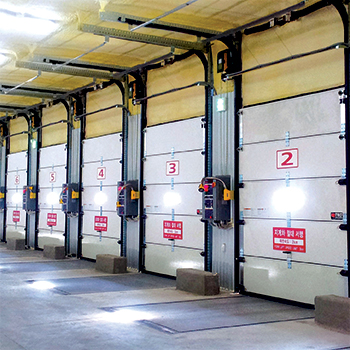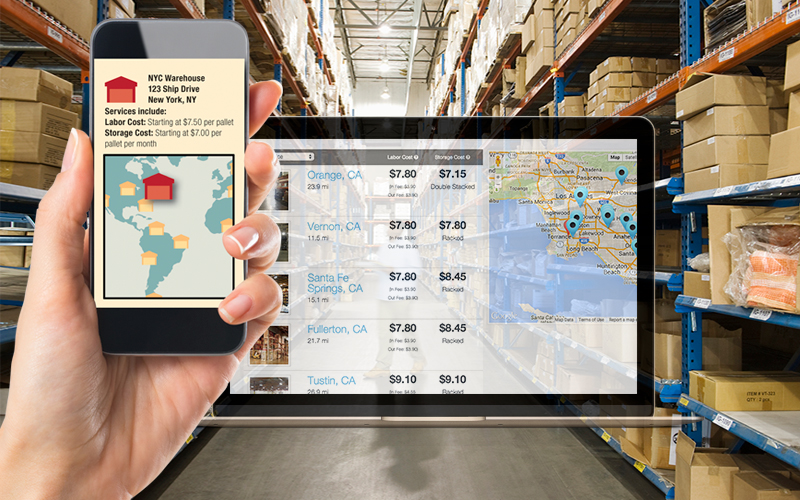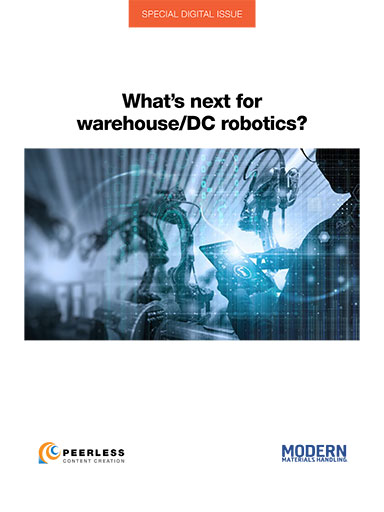How Third-Party Logistics Bid on New Proposals

Consumer demands are transforming supply chains, and a successful third-party logistics provider must be a partner in its customers’ transformations, the result: a substantial increase in services and capabilities.
In recent years, the third-party logistics market has enjoyed a period of rapid growth driven in part by the economic recovery and in part by the growth of e-commerce order fulfillment.
But until recently, the fundamental services they provided were standard fare.
Within the four walls of public warehouses, the solution mix was largely predictable and conventional: third-party logistics (3PLs) prized the flexibility of manual processes enabled by automatic identification and warehouse management systems over capital investment in materials handling automation.
Now, all bets are off. Traditional key performance indicators (KPIs) like cost per pallet are almost irrelevant when compared to the goal of increased customer satisfaction.
Traditional rules of thumb like short contract terms and minimal automation are fading as partnerships deepen and technology investments broaden.
Marvin Logan, director of consulting for Bastian Solutions, describes the changes in his company’s relationship with 3PLs as the market has evolved.
“In the first part of my career, 3PLs showed little interest in what we had to offer,” he says.
“In the last two or three years, we’re seeing longer contracts and shared performance goals that let 3PLs look at more technology and software.”
He adds that 3PL clients are even bringing in Bastian ahead of contract negotiations or bidding to do consulting work, as the 3PL or its client looks for ways to improve the landscape before the bid comes out. “This puts the 3PL in front of the client as a thoughtleader or change agent,” he says.
Dennis Walton, vice president of operations for Legacy Supply Chain Services, says client demands have required 3PLs to bring much more to the table. “They hire us to help tackle supply chain challenges, not just run a warehouse and get good KPIs,” Walton says.
“The most successful outsourcers are not the ones who say: ‘Here’s some information, design a solution to hit the KPIs, and see how you do.’ That’s a recipe for disaster. It’s the ones who assign relationship managers as points of contact to work with the 3PL. The best outcomes are when the customer is very involved, participates and gives direction, and acts on our recommendations, whether they adopt, decline or modify them.”
A Proposal For Transformation
When it comes to large investments, companies running their own warehouses and DCs might take a “set it and forget it” approach, rolling out a massive project designed to carry them through the next several years. Because of the uncertainty introduced by e-commerce and omni-channel trends, this is a bold approach that produces as many success stories as painful lessons.
Alternatively, companies grappling with swift change might approach a 3PL with an eye toward a much shorter-term fix, and then bounce from one provider to another every six months while chasing incremental savings. The new state of the 3PL market resembles the best of both worlds.
“The market has moved away from just being a public warehouse or contract logistics,” says Jeff Lammert, client executive of system sales for Vargo. Lammert offers his perspective as a former employee of 3PL giant Exel (now DHL) for 18 years.
“Many companies don’t have the in-house expertise or resources to evolve to something new, whether e-commerce or returns processing or crossdocking, so 3PLs have gone into a very consultative approach as subject matter experts. This can minimize the risk for those engaging 3PLs since they don’t have to go to other consultants and try to pull all the pieces together themselves. And after a five-year term, it’s harder to walk away to something new.”
Logan notes a similar trend for 3PLs to proactively offer transformation as opposed to merely answering a request for proposal (RFP). That, in turn, is driving a harder look at materials handling automation and technologies than in the past. “Ten years ago, they were just trying to find a conveyor layout that might help them win the business,” he says. “There are different conversations now that are more strategic.
A consulting engagement can last three or four months, during which the 3PL gets deep into the client’s business. In a lot of ways, this eliminates competition, since even if an RFP comes out of that process, the consulting 3PL will be so much better positioned to win it.”
In today’s world, Lammert adds, e-commerce calls for huge investments in capital and time, and 3PLs have found that investment can lead to longer relationships. ROIs might now be calculated over five years, and, Lammert says, 3PLs are no longer shy to invest capital if it adds value. Because labor costs are among the largest expense in a distribution center, the strain of transitioning from full pallets to cases and eaches often demands a closer look at automation.
Jason Minghini, president, FW Warehousing (former vice president of best practices for Kenco), says 3PLs have to be a lot more dynamic in considering solutions for the short and long term. Multimillion-dollar automated storage and retrieval systems (AS/RS) will continue to be the rarity, but the warehouse automation market now includes more affordable and scalable options, including collaborative robotics, goods-to-person solutions and automatic guided vehicles (AGVs).
“I think we will see a lot of AGVs in warehousing in the next three to five years for two reasons: The ROI and price point are becoming more attractive, and business models are driving those solutions, where in the past they didn’t,” Minghini says.
“These technologies will not be a substitute for labor, but AGVs and robots will be used to complement labor. On the information technology side, we already see labor management systems (LMS) put into play upfront, along with a lot more applications of Tier 1 WMS (warehouse management system) solutions.”
Bastian’s Logan also anticipates a shift in the technologies used to optimize labor, citing the old rule of thumb that workers spend 50% of their time picking and 50% walking to the pick. A goods-to-person solution that can cut 25% of total labor costs will raise some eyebrows, he says.
“Some of the robotic solutions are very scalable and it’s possible to right-size the technology and know you will not be stuck with it forever,” Logan says.
“Various new automated storage and robotic shuttle technologies allow you to add or subtract robots, not whole aisles. Some companies are talking about having a pool of robots that can be leased or rented as needed. I’m not aware of anyone doing that, but there’s talk. The only problem is that everyone has the same peak season.”
Software is also helping with the simulation and forecasting of system performance. Based on the order profile, SKU mix and anticipated peaks, it’s possible to model how a system and its materials handling equipment will accommodate a spike of 10 times the volume.
“3PLs are doing a lot more simulation than in the past,” Minghini says. “If you can know you will need a certain amount of equipment and labor, you can build strategic partnerships with an automation company, for example, to have those assets rented and ready when needed. The key is to be proactive and ensure that materials handling equipment, whether a forklift or AGV, will be available when peak hits.”
A Means to an End-to-End
The concept of network analysis is central to the goal of optimizing each facility as well as the broader supply chain. Lammert says it’s important to carefully consider facility location and capacity to determine if it makes sense to backfill work into an existing building, retrofit that building to accommodate the work, or determine if you have the critical mass for a Greenfield project.
“There are two approaches,” says Lammert. “One is more common among mom-and-pop outfits and has to do with small size and scale and being cost competitive. The other is larger scale with more detailed form, fit and function, with turnkey solutions designed to improve transportation or time to market.”
Walton offers an example of the way network design and equipment selection go hand in hand. He describes a customer with three sites, six or seven years in business, rapid growth of 40% per year and pick/pack operations.
“They had no WMS, no clear path and long-term leases on facilities they had already outgrown,” says Walton.
“After the first layer of identifying processes, leadership, accountability, corporate culture and engaging employees, we looked at network design. In this case, we determined the facilities were in the right place, but we also defined the ideal facility size. They are now evaluating automation and capital investments to ratchet down costs. As they go forward, they at least have a good baseline. If they had looked at automation earlier, they would have been skipping several important steps.”
Related Article: The Emerging “Uberization” of Dynamic On-Demand Warehousing for eCommerce
Article Topics
Bastian Solutions News & Resources
Movu Robotics and Bastian Solutions partner to offer flexible robotics solutions GEODIS maximizes flexibility and minimizes touches Exotec adds Bastian Solutions as newest regional integrator in North America Depalletizing and palletizing gain in flexibility Bastian Solutions CB18 AGF: Smart, Efficient Manufacturing and Distribution Material Handling – no Operators Needed Bastian Solutions reveals automated guided forklift Bastian Solutions SmartPick™: Reimagine Order Fulfillment with Artificial Intelligence More Bastian SolutionsLatest in Warehouse|DC
Spotlight Startup: Cart.com is Reimagining Logistics Walmart and Swisslog Expand Partnership with New Texas Facility Taking Stock of Today’s Robotics Market and What the Future Holds U.S. Manufacturing Gains Momentum After Another Strong Month Biden Gives Samsung $6.4 Billion For Texas Semiconductor Plants Walmart Unleashes Autonomous Lift Trucks at Four High-Tech DCs Plastic Pollution is a Problem Many Companies are Still Ignoring More Warehouse|DCAbout the Author



















